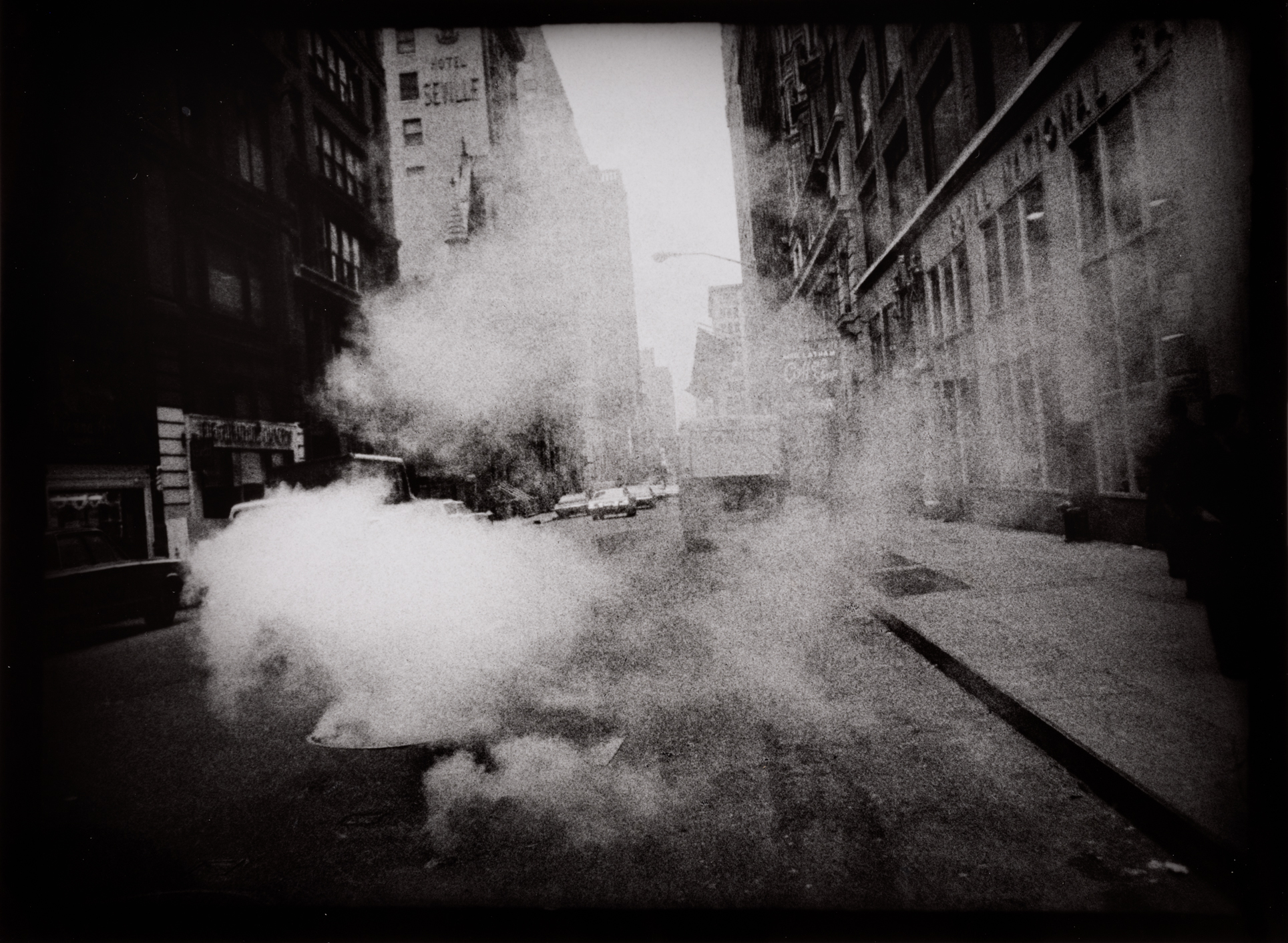Reflex Amsterdam is proud to premier the first exhibition featuring a large selection from Daido Moriyama’s Another Country in New York (1971).
The photographs capture Moriyama’s signature style: rough, out of focus, and grainy. Upon taking a photograph, the would rarely gaze into the viewfinder in order to capture what he calls a ‘passerby’s view’. The photographer refused photography’s potential of sharpness to envision it as a tool to capture reality in its essence; exciting and chaotic. The renowned series of photographs will be on show from March 26th onwards.

Another Country in New York encompasses the artist’s 1971 trip to New York in snapshots of the airplane, the hotel room, street life, and billboards. It was the artist’s first trip outside of Japan. The odd frames, dynamic diagonal compositions, and flashing lights capture the overwhelming sense of the urban landscape in black and white photographs inhabited by both turmoil and beauty. The photographs were printed in 2002 by Moriyama himself and has never been shown in its completion. They have been hidden in the archive but will now be on show for lovers of vintage photography and as a crucial body of work in Moriyama’s oeuvre.


The series refers to the title of the 1962 book by the author James Baldwin, Another Country. Set in New York, Baldwin narrates aftermath of the tragic death of a young man. Yet, the book is truly a portrait of New York City as every sentence pulsate with urban buzz. It is no surprise that Moriyama refers to this book, as he places his finger carefully on the city’s pulse to press the shutter-release. Describing photography as a ‘fossil of light and time’, his audiences are offered a fragment of an elucidated, long-gone moment. His works are portraits of the urban mystery, not an attempt to solve it. This sense of mystery is reflected in the double prints, where two photographs are printed as a sequence; two images are paired revealing stark oppositions or overwhelming impressions of New York.

An outstanding photographer and a figurehead in the field, Moriyama joined Provoke in 1968. The Japanese experimental project attempted to give an account of lived experience through the medium of photography. This was a radical move which continues to resonate through Moriyama’s work. The intense depiction of New York in 1971 is continually captivating by its confrontational portraits of New York; one so alive and dynamic that it emanates from the photographs even decades after.


Daido Moriyama (1938, Ikeda-City, Osaka) was initially trained in graphic design before taking up photography. He trained as an assistant under Takeji Iwamiya and Eikoh Hosoe until becoming an independent photographer in 1964, publishing his first books Nippon Gekijo Shashincho in 1968 and Shashin yo Sayounara in 1972, both depicting the darker sides of urban life and the city of Tokyo. Solo exhibitions include William Klein + Daido Moriyama, Tate Modern (London, 2012); On the Road, The National Museum of Art, Osaka (2011); Daido Retrospective 1965-2005 / Daido Hawaii, at the Tokyo Metropolitan Museum of Photography (2008), Centro Andaluz de Arte Contemporaneo, Sevilla (2007), Foam (Amsterdam, 2006), Fondation Cartier pour l'art contemporain (Paris, 2003), Fotomuseum Winterthur (Winterthur, 2000), San Francisco MOMA (1999, traveled to the Metropolitan Museum of Art, New York). He is a recipient of the prestigious Lifetime Achievement Award at the 28th Annual Infinity Awards of the International Center of Photography, New York, 2012, and The Culture Award from the Deutsche Gesellschaft für Photographie, 2004.











































